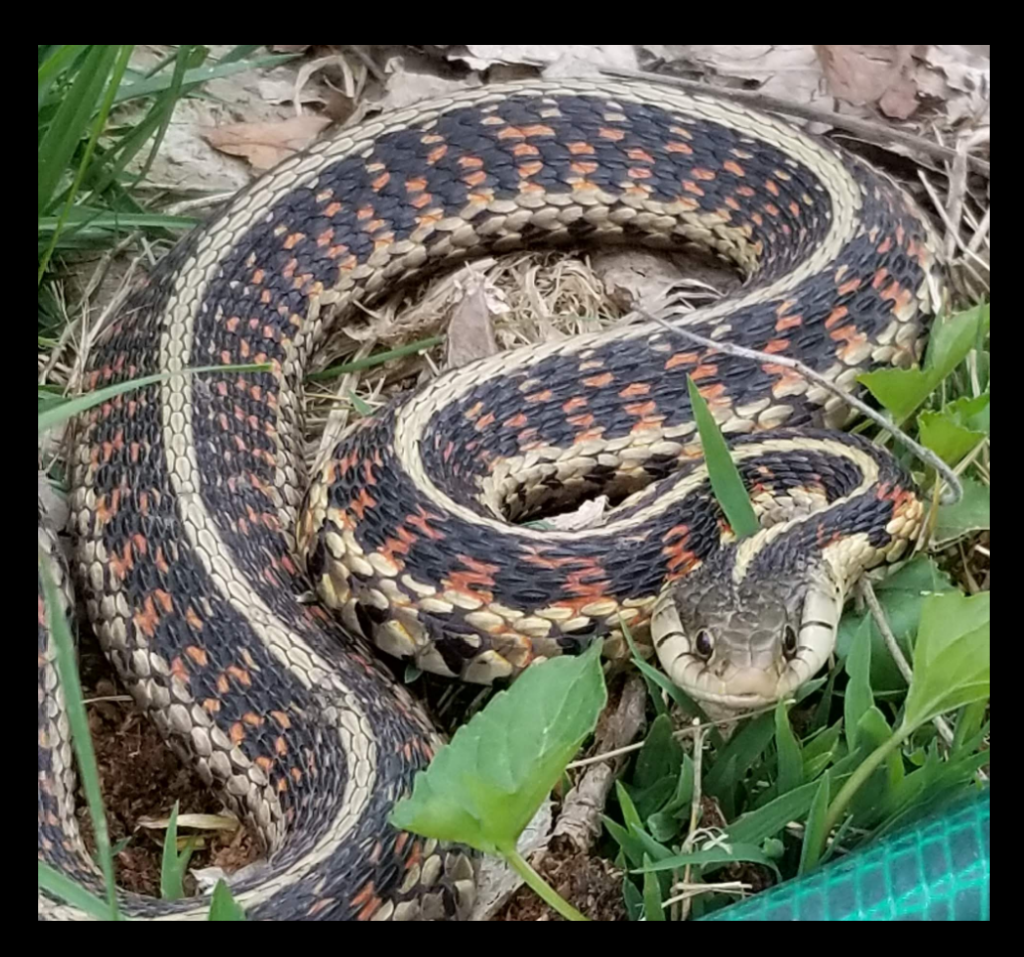Snakes?! Yikes! Many gardeners would feel the same way about slithering snakes in the garden, but not I. Do they scare me sometimes? Sure. But the small snakes, not the large ones, I consider to be garden buddies. All things have a purpose on this earth, and for snakes it is no different. While I and other farmers lament the damage caused by blacksnakes in the chicken house, they do also go after rats, mice, and other destructive rodents.
In the garden, there are many reasons to enjoy finding a small snake under a piece of wood, or slithering away under a rock. The best of these reasons though is pest control. Small garden snakes are great pest control for gardeners. So forget your aversion to them and come learn about the small snakes in the garden.
Western Worm Snake
One of the most interesting little snakes in the garden, I have only had a few. But to see them twist and move around is crazy. I once found one under a piece of tin, and picked it up, but the thing was moving so much I could not photograph it. So, I had to place it in a wheelbarrow to take a picture. The western worm snake gets to about 14 inches long, and is glossy gray to brown on top, and coral to pink underneath. When disturbed, it whips around like a crazy worm. And they eat worms.
Gardeners may say that a snake that eats worms is a bad thing, but with the increased pressure of invasive worms, it may be advisable to research if they eat things like hammerhead worms, or jumping worms.
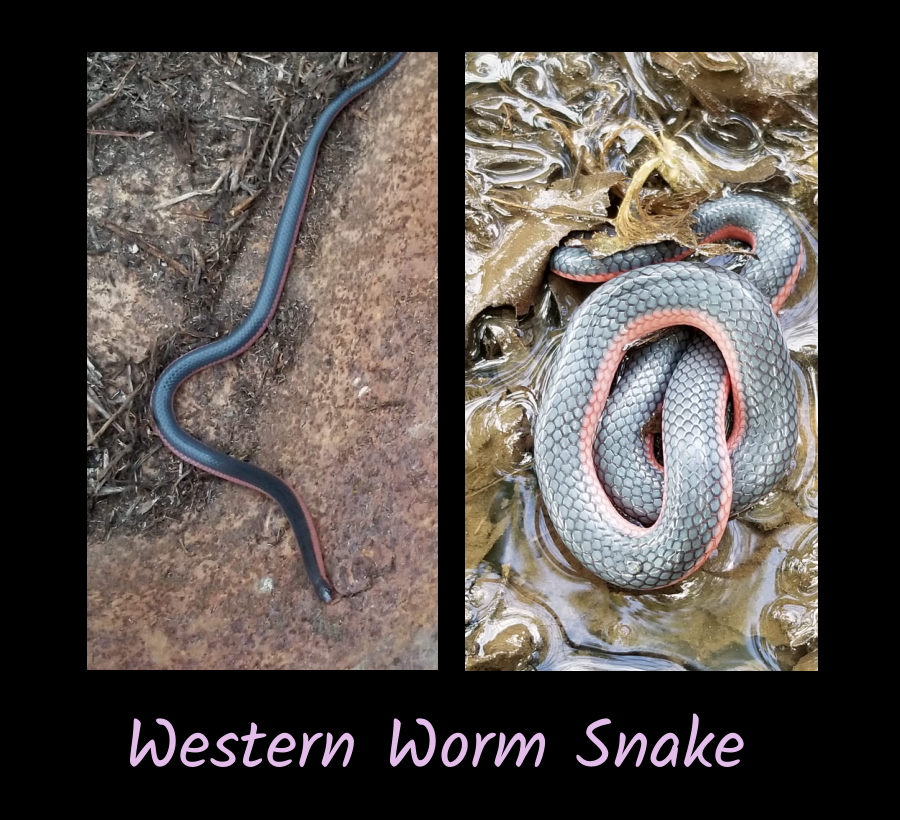
Ring-Necked Snake
Out of the small snakes, this one may be the easiest to recognize with its small red or orange ring around the neck. The belly color matches the ring, while the upper surface is dark gray. They grow up to 17 inches long and are quite common in the Central Great Plains. I find them often in the garden. They eat mostly worms, but will also eat other ground dwelling arthropods such as snails and slugs.
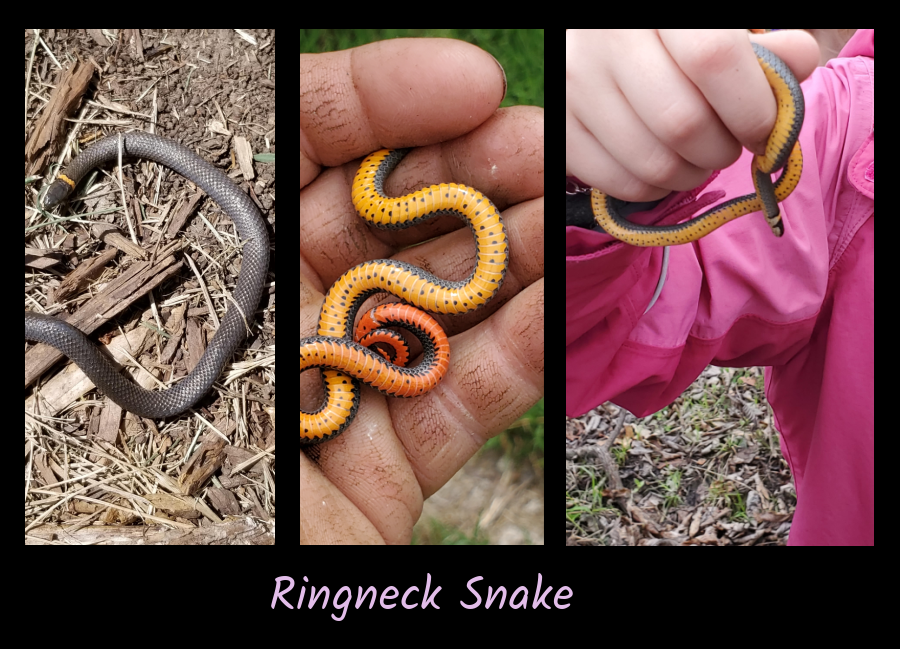
Dekay’s Brownsnake
This is my favorite little snake! These seem to pop up so much in the garden, on hikes, and during nature walks with the American Heritage Girls (my daughter is in this). They grow to around 16 inches long, and are brown, gray, or reddish brown with a tan or brown stripe down the back. Also down the back is a double tow of black spots. Behind the head, on either side of the neck are two large black spots.
What I love is that these snakes eat lots of slugs and snails in my garden. They do eat worms too, but I do not have a shortage of worms in my garden, despite all the snakes! My kids also love to see my little garden buddies and are always asking to hold one when I find it.
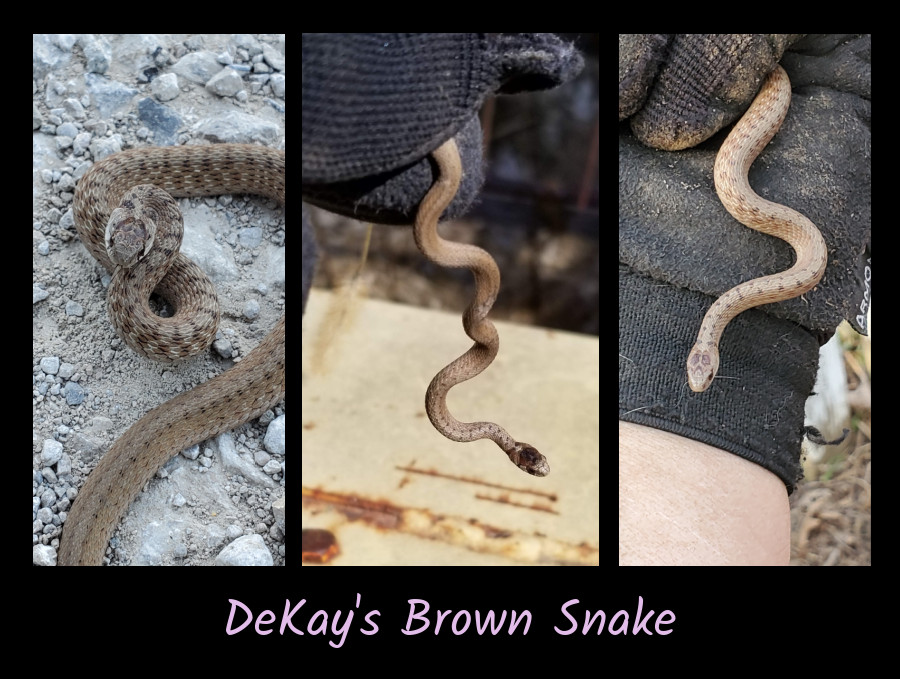
Common Garter Snake
These snakes grow up to 4 feet in length, so are a bit on the larger side for snakes, but they are welcome, at least in my garden. These are what my customers and fellow gardeners see the most of in their gardens. They can be a bit difficult to distinguish from the plains garter snake, but those are mostly not found in the Central Great Plains.
Common garter snakes are yellow striped with alternating black and red spots on top. A single unbroken yellow stripe is on top. Their bellies are gray or whitish. They primarily eat small frogs, toads, snail, other snakes, mice, and earthworms.
Lined Snake
The lined snake is dark grayish or greenish-brown, with 3 cream colored lines down the back of the body. They grow up to 17 inches long, though I have never found one bigger than about 10 inches. I have come across a fair number of these snakes as well, an more so in recent years (since 2020). They eat primarily insects and worms.
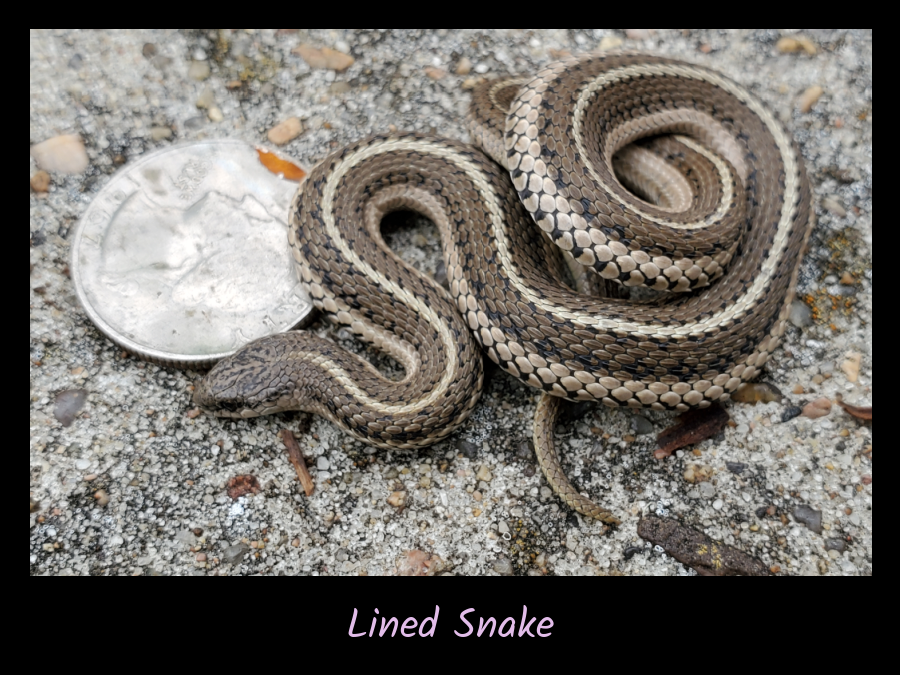
Smooth Earthsnake
I have yet to come across this snake either in the garden or the woods, though it is likely that I saw one and did not get a photo. The smooth earthsnake only grows up to 12 inches long. They are brown-gray with a cream-colored body. It eats earthworms, slugs, snails, and soft-bodied insects.
Attracting Snakes to the Garden
Wait, what?! Yes, I would like to continue attracting snakes to my garden. Despite other’s fears, I like having free pest control, especially of slugs and snails, of which I have an abundance. To attract snakes to the garden, you must provide them with shelter. The food is already there, in the form of insects, snails, slugs, and worms. But shelter they must have.
There are 2 broad ways of providing shelter, both of which can be done without making the garden look too much like a garbage pit. The first way is to provide a small brush or rock pile. I have both in my yard and both are good places for snakes. Also, brush piles, if large enough, are great for a variety of birds, including the Carolina wren, which prefers to nest in them. And the small snakes do not eat birds nor their eggs.
The other way is to let your shrubs alone, and not prune out the base of them. I see many people pruning shrubs into trees or shaping them into vases by pruning around the bottom. If you leave your shrubs alone, small snakes may use those spaces for hiding.
Conclusion
Having small snakes in the garden may not be for everyone, but they can certainly work for those of us who not only enjoy wildlife, but enjoy free pest control. There are a number of small snakes in the Central Great Plains which can benefit the garden and the gardener. So enjoy them, and let them work for you.
Happy planting!

